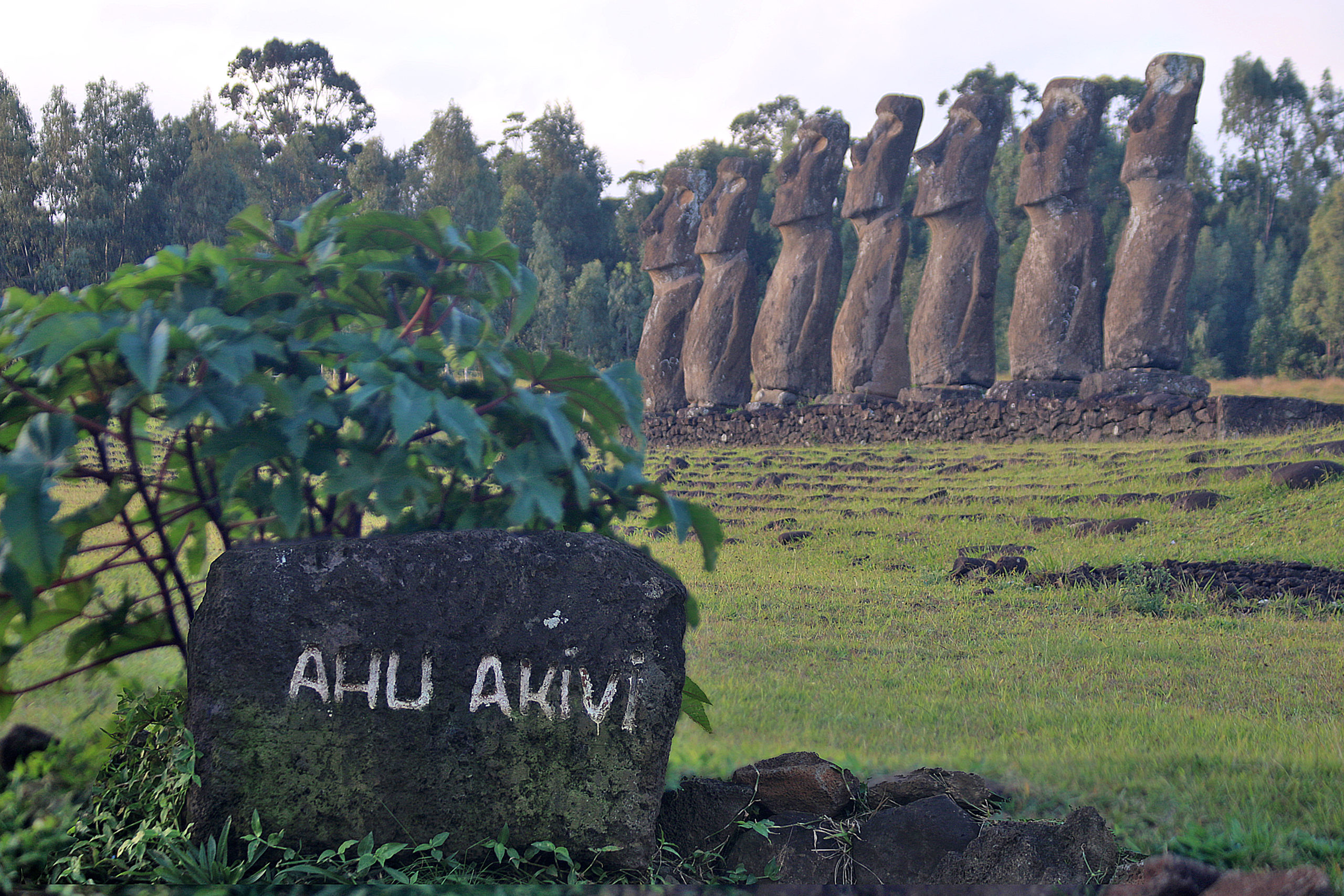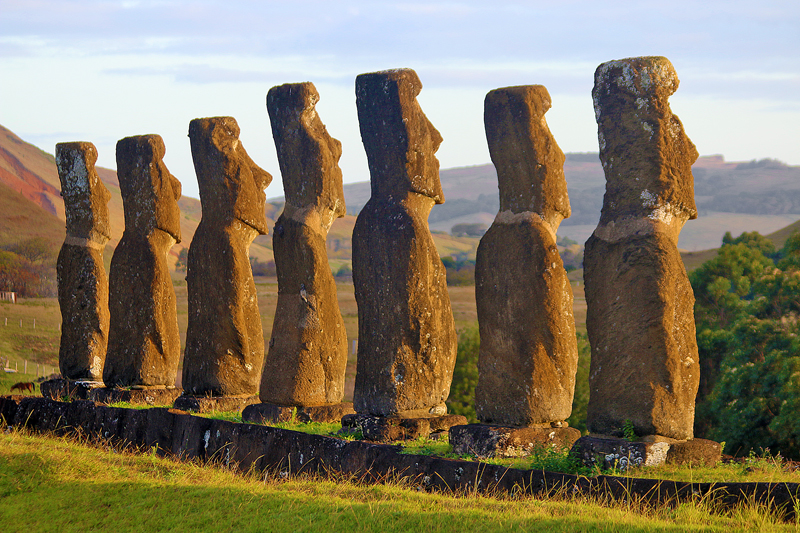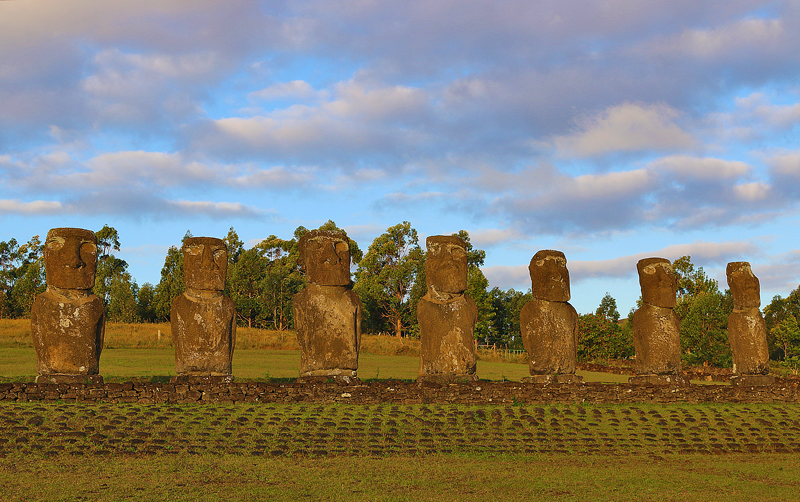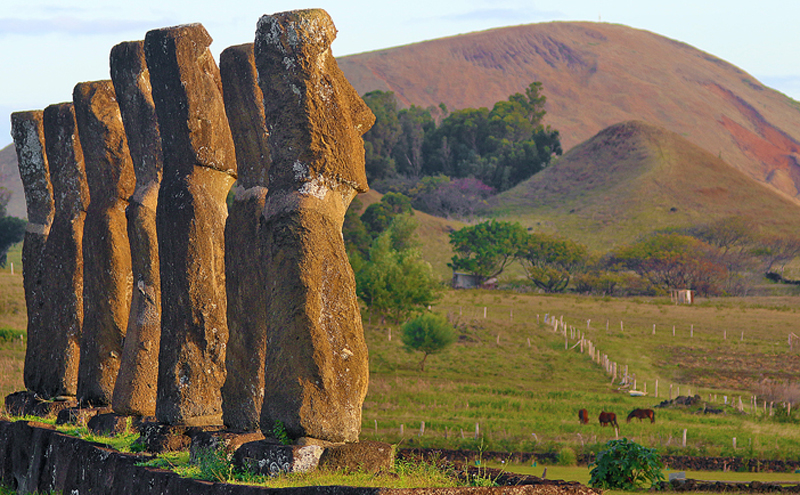Note: This article pertaining to The Only Statues on Easter Island Which Face the Sea: Ahu Akivi was originally published on Sunday, July 5, 2020 at 4:49 in the afternoon and has been updated.
Of the hundreds of statues throughout Easter Island, the seven moai of the explorers at Ahu Akivi are the only ones which face the Pacific Ocean in order to watch over and protect the inhabitants through the influence of their mana — or mystical power — even though the ahu itself is known for its astronomical orientation and is located 2.6 kilometers inland away from the shore.
The Only Statues on Easter Island Which Face the Sea: Ahu Akivi

According to legend, seven young explorers were sent to sail across the sea to locate Easter Island, study its conditions, and determine where is the best area to disembark prior to the arrival during the fifth century of the colonizers who were led by Hotu Matu’a because Hau Maka — who was the priest of Hotu Matu’a — had a dream in which his soul flew across the Pacific Ocean when he spotted an island which he considered to be the center of the earth.

Hau Maka imparted his dream to Hotu Matu’a — who was the legendary first settler and supreme chief or king of Easter Island and also ancestor of the Rapa Nui people — which was embraced as Hotu Matu’a sent the explorers and awaited their return.

After eating, planting yams, and resting, the seven explorers returned home to relate the good news to Hotu Matu’a, who traveled with a large crew — along with his queen Vakai and his family — and with everything they needed to survive in the new land.

The explorers then rowed a single huge double-hulled canoe towards the “center of the earth” and landed at Ana Anakena at Rapa Nui. I intend to report on my experience at Ana Anakena in a future article here at The Gate.

Similarly to the other ahu on Easter Island, this ceremonial center of Ahu Akivi is oriented with astronomical precision, since the moai look straight to the sunset during the spring equinox of September 23; and their backs face the sunrise of the autumnal equinox of March 20 — this is the southern hemisphere, after all — which are the moments at which the center of the visible sun is directly above the equator…

…but dissimilarly to those at other ahu, the seven moai are situated uniformly, which lends a sense of harmony and balance to Ahu Akivi.

Ahu Akivi is believed to have had at least three construction stages towards the end of the 1400s — meaning that it was supposedly built approximately one millennium after the arrival of the explorers.

The construction which visitors currently see is that of the second stage, which is considered to be the most monumental stage.

Ahu Akivi is located in a territory associated with the Miru clan, which is the highest ranking of the eight tribes of Easter Island.

In March of 1960, the seven moai explorers of Ahu Akivi underwent a reconstruction project through which they were restored…

…and the reconstruction project was considered to be a milestone on Easter Island, as it was the first serious archaeological excavation — as well as the first complete restoration of a ceremonial site — in Rapa Nui.

The location of Ahu Akivi is on the southwest slope of the Maunga Terevaka volcano, which is the highest point on Easter Island.

The moai were created at the Rano Raraku quarry, which is at least 15 kilometers or 9.3 miles away.

Each moai is approximately 16 feet or 4.9 meters in height, 18 tons in weight, and 230 feet or 70 meters in length.

The seven moai are thought to have been placed at Ahu Akivi at least 150 years prior to when the first European explorers found Easter Island — which suggests that at that time the political stability and economic abundance necessary to carry out a construction of this caliber still reigned; and that their culture evidently existed for as many as 300 years with economic prosperity with political stability.

Ahu Akivi is surrounded mostly by farmland on Easter Island, as the seven moai explorers quietly stand guard of their territory…

…and to this day, the seven moai explorers of Ahu Akivi face yet another spectacular sunset over the Pacific Ocean, which is considered to be the best time to visit.

Final Boarding Call
Ahu Akivi is located on the southwestern coast of Easter Island approximately 6.6 kilometers north northwest of Hanga Roa. Driving there is easy, as the entrance is marked well. Free parking is available. The fastest route will take fewer than 20 minutes of your time.
Remember that Ahu Akivi is part of Parque Nacional Rapa Nui — which is the national park of Easter Island — and you must present your ticket at the checkpoint prior to entering. You will need to pay $80.00 in United States dollars just for admission into the areas of the national park; and the ticket may be purchased either on arrival at the airport or in the center of town of Hanga Roa, which is the only municipality on Easter Island.
You can purchase handicrafts, souvenirs, and something to eat and drink at a small vendor nearby. Use of the nearby public toilets costs 500 Chilean pesos.
Ensure that you please leave cultural features exactly as you find them during your visit.
Other articles pertaining to Easter Island include:
- Easter Island: Itinerary and Master Guide [Work In Progress]
- Visiting The Largest Volcano Crater on Easter Island: Rano Kau
- The Largest Statue Ever Moved and Successfully Erected on Easter Island: Ahu Te Pito Kura
- Easter Island is Not Only Statues: Ana Te Pora Lava Tunnel
- What You Need to Know About Renting a Vehicle and Driving on Easter Island
- Dogs Versus Horses on Easter Island
- Road Trip Around Easter Island
All photographs ©2019 by Brian Cohen.

